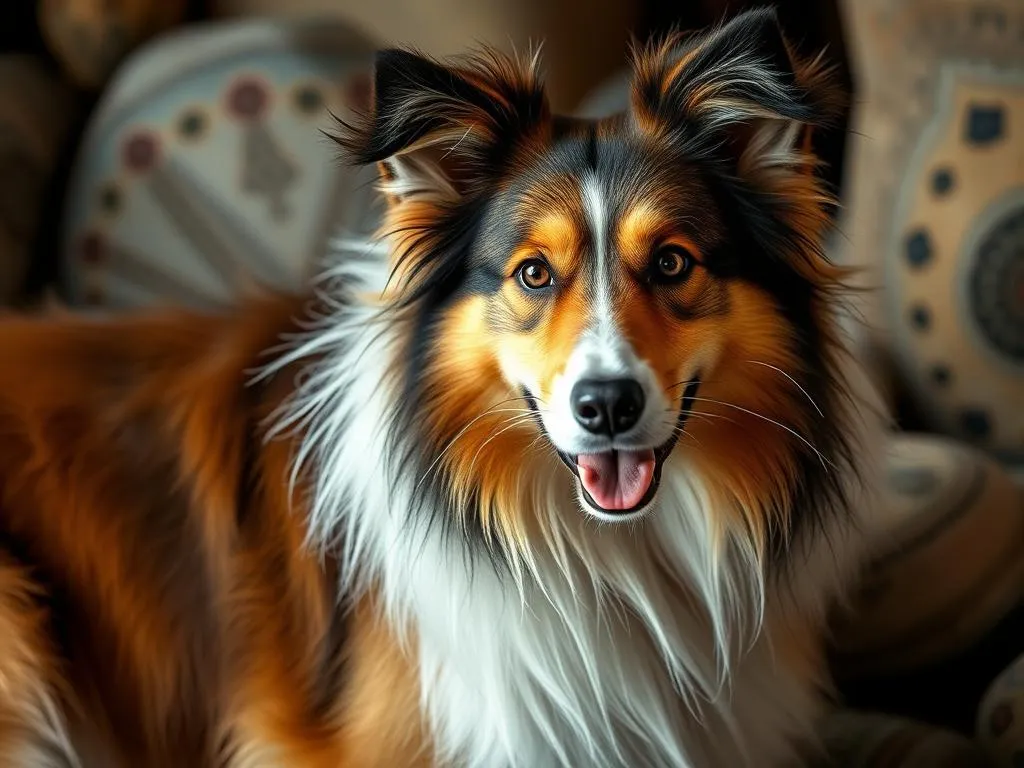
Introduction
Dog breeds play a significant role in our relationship with canines, influencing everything from behavior to physical characteristics. Understanding the traits associated with different breeds is essential for potential owners to find the right match for their lifestyle. Among the many breeds, the Shetland Sheepdog, commonly known as the Sheltie, stands out for its intelligence and affectionate nature. This article will focus on how big a Sheltie gets and provide an in-depth look at the breed’s characteristics, care needs, and more.
Understanding Dog Breeds
Definition of Dog Breeds
A dog breed is a specific group of domestic dogs with particular characteristics that distinguish them from other breeds. These traits can include size, coat type, temperament, and appearance. Historically, dog breeds were developed for specific roles, such as herding, hunting, or companionship. Over time, breeding practices have refined these traits, resulting in a diverse array of breeds that cater to various human needs.
Factors Influencing Dog Size
Several factors influence a dog’s size, including genetics, nutrition, and environmental conditions.
- Genetics and Breed Standards: Each breed has a standard that outlines desirable physical traits, including size. The genetic makeup of a dog largely determines its potential size.
- Nutrition and Health Considerations: Proper nutrition during the growth stages is crucial. A balanced diet supports overall health and can influence growth rates.
- Environmental Factors: Dogs raised in different environments may experience variations in growth due to factors such as activity level, space to roam, and individual health.
Overview of the Shetland Sheepdog
Breed History
The Shetland Sheepdog originated in the Shetland Islands of Scotland. Initially bred to herd small livestock, including sheep and ponies, the Sheltie is known for its agility and intelligence. The breed was refined over the years, combining traits from the Collie and local dogs, resulting in the affectionate and loyal companion we recognize today.
Sheltie Characteristics
Shelties are known for their friendly and energetic personalities. They are highly intelligent, making them relatively easy to train, and they thrive on human interaction. Their coats come in various colors, including sable, black, and blue merle, often with white markings. The double coat provides insulation and requires regular grooming to maintain its health.
Size of Shetland Sheepdogs
Average Height and Weight
When considering how big a Sheltie gets, it’s essential to look at the breed standards. The average height of a Shetland Sheepdog ranges from 13 to 16 inches at the shoulder, while their weight typically falls between 20 to 40 pounds. This makes them a small to medium-sized breed, suitable for various living environments.
Comparison Table: Sheltie Size vs. Other Breeds
| Breed | Average Height | Average Weight |
|---|---|---|
| Shetland Sheepdog | 13-16 inches | 20-40 pounds |
| Cocker Spaniel | 14.5-15.5 inches | 20-30 pounds |
| Beagle | 13-15 inches | 20-30 pounds |
| Miniature Schnauzer | 12-14 inches | 10-20 pounds |
Growth Stages
Shelties go through several growth stages that are essential for their development.
- Puppy Stage (0-6 months): During this time, Sheltie puppies grow rapidly. They may double or triple their weight within the first few months.
- Adolescence (6-18 months): Growth begins to slow down. By around 12 months, most Shelties will reach their adult height, but they may continue to fill out until they are about 18 months old.
- Full Maturity: By 2 years, Shelties are generally fully matured in size and weight.
Factors such as genetics, nutrition, and overall health can significantly affect individual growth rates.
How Big a Sheltie Gets
To answer the question of how big a Sheltie gets, we can summarize the typical size ranges. Adult Shelties usually stand between 13 and 16 inches tall and weigh 20 to 40 pounds.
Growth Pattern Chart:
– At 3 months: 5-10 pounds
– At 6 months: 10-20 pounds
– At 1 year: 15-25 pounds
– At 2 years: 20-40 pounds
This growth pattern indicates a steady increase in size, with considerable variation based on genetics and upbringing.
Caring for a Shetland Sheepdog
Nutrition Needs
Proper nutrition is vital for a Sheltie’s health and growth. A balanced diet rich in protein, vitamins, and minerals supports their active lifestyle.
- Dietary Requirements: Look for high-quality dog food that lists meat as the first ingredient. Avoid fillers like corn and soy.
- Feeding Schedule: Puppies require more frequent meals (3-4 times a day), while adult Shelties can thrive on two meals daily.
- Portion Sizes: Follow the guidelines on the food packaging, but adjust based on your dog’s activity level and weight.
Exercise Requirements
Shelties are energetic dogs that require regular exercise to stay healthy and happy.
- Physical Activity: Aim for at least 30-60 minutes of exercise daily. Activities can include walks, playtime, and agility training.
- Suggested Routines: Consider incorporating interactive games, such as fetch or hide-and-seek, to keep them engaged and mentally stimulated.
Grooming and Maintenance
Grooming is essential for maintaining a Sheltie’s coat health.
- Grooming Needs: Regular brushing (at least once a week) is necessary to prevent matting and reduce shedding.
- Coat Health Tips: Use a slicker brush for the undercoat and a comb for tangles. Regular baths will help keep their coat clean and healthy.
Common Health Issues in Shetland Sheepdogs
Genetic Predispositions
Like many breeds, Shelties are susceptible to certain health issues.
- Common Health Problems: These may include hip dysplasia, progressive retinal atrophy (PRA), and certain skin conditions.
- Preventative Care: Regular vet check-ups and vaccinations are vital to catch and prevent health issues early.
Signs of Health Issues
Being aware of potential health problems can help owners respond quickly.
- Symptoms to Watch For: Look for signs such as changes in appetite, abnormal behavior, or physical discomfort.
- Consulting a Veterinarian: If any concerning symptoms arise, it’s essential to consult a vet promptly to address the issue.
Shetland Sheepdog in Popular Culture
Shelties in Media
Shetland Sheepdogs have been featured in various forms of media, showcasing their intelligence and loyalty. Movies and TV shows often portray them as friendly companions, endearing them to audiences and increasing their popularity as pets.
Shelties as Family Pets
Shelties are beloved family pets due to their affectionate nature and compatibility with children.
- Popularity: Their friendly demeanor makes them excellent companions for families and individuals alike.
- Owner Testimonials: Many Sheltie owners rave about their dog’s loyalty, intelligence, and ability to bond with family members.
Conclusion
Understanding how big a Sheltie gets is just one aspect of appreciating this charming breed. With an average height ranging from 13 to 16 inches and a weight between 20 to 40 pounds, Shelties are perfectly sized for family life, whether in an apartment or a house with a yard. Their playful and intelligent nature makes them excellent companions. As potential owners consider bringing a Sheltie into their lives, it’s vital to be aware of their care needs, health issues, and grooming requirements. Responsible pet ownership begins with knowledge, and being informed about breed characteristics can lead to a fulfilling relationship between dogs and their owners.









